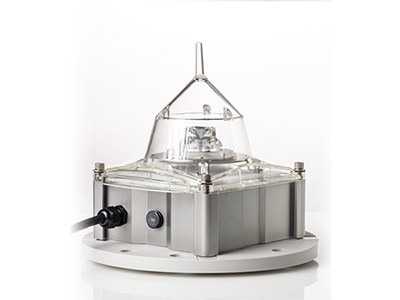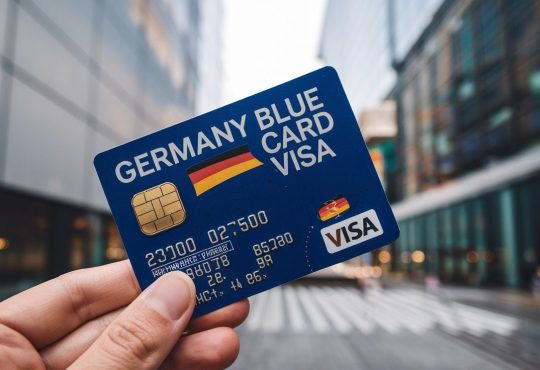
Most people have seen a boat out on the water at night and marveled at the beauty of the lit-up vessel. Many don’t know that there is a particular reason for marine navigation lighting and that rules govern the type, placement, and color of said lights. Different boats have different lighting requirements, but all serve the same purpose; to help prevent collisions.
A vessel must be equipped with navigation lights to be visible from both ahead and behind. These lights must be placed in specific positions on the boat and meet certain intensity requirements. The color and status of the navigation lights are regulated by the International Maritime Organization (IMO).
Lightship and beacon systems have long been used as marine navigation aids. In recent years, electronic navigational aids such as GPS have replaced many older systems. However, marine navigation lighting is still an essential part of safe boating. This blog will have discussions on the different types of marine navigation lights and their purposes.
WHAT ARE THE VARIOUS TYPES OF MARINE NAVIGATION LIGHTS?
Marine navigation lights indicate a vessel’s position, course, and status. These include running lights, anchor lights, stern lights, and signal lights. Each type of light has a specific purpose and must be used according to maritime regulations.
Running lights are used to show a vessel’s position when underway. Red and green lights are positioned at the ship’s bow and front, while white light is placed at the stern or back. These lights demand visibility from a distance of two miles.
Anchor lights –
These lights are used to indicate a vessel’s position when anchored. You must show white light at the stern or back of the boat. This is visible from a distance of two miles.
Stern lights –
Stern lights are used to show a vessel’s position when underway. You must show a white light at the stern or back of the boat. Ensure visibility from a distance of two miles.
Signal lights –
Signal lights are used to communicate with other vessels. You may use various colours and patterns for signal lights depending on the situation. For example, a red light indicates danger, while a green light indicates that a vessel is safe to approach. Signal lights must be seen from a stretch of two miles.
Therefore, marine navigation lights are an essential part of safe boating. Vessel operators must be familiar with the different types of lights and when to use them. Failure to comply with maritime regulations regarding navigation lights can result in collisions, accidents, and injuries.
DID YOU KNOW VARIOUS KINDS OF MARINE NAVIGATION LIGHTS?
There are three types of marine navigation lights: stern, masthead, and sidelights.
- Stern lights are located at the back of the boat and are used to signal the vessel’s position to other ships.
- Masthead lights are located at the top of the mast and indicate the vessel’s direction of travel.
- Sidelights are located at the boat’s sides and signal the vessel’s position to other crafts.
HOW TO CHOOSE THE RIGHT MARINE NAVIGATION LIGHT?
Whenever you choose the right marine navigation light, there are specific points that you must consider. Let us look at the topics below for a better understanding:-
First, you need to determine the purpose of the light. Will it be used for navigation or simply as a courtesy light?
Second, you need to decide what type of light you need. Several different types of marine navigation lights are available on the market today.
Third, you need to determine the size and shape of the light. Marine navigation lights come in a variety of sizes and shapes.
Fourth, you need to decide how bright the light needs to be. Marine navigation lights are available in a variety of brightness levels.
Finally, decide about the color of the light so that it can meet the purpose. Marine navigation lights are available in a variety of hues.
When choosing a suitable marine navigation light, it is essential to keep these factors in mind. By doing so, you can select the best for your needs.
TIPS FOR NAVIGATING MARINE LIGHTING:
Most marine lighting is designed to be durable and weather-resistant, but there are still a few things to do for your fixtures in top shape. Here are a few tips:
Avoid exposure to salt water and direct sunlight whenever possible. Saltwater can corrode metal fixtures, and direct sunlight can fade or damage plastic or glass components.
Clean your fixtures regularly with fresh water and a soft cloth. It will help remove any salt or dirt buildup that could damage the finish or cause corrosion.
Inspect your fixtures for signs of damage regularly, and repair or replace any damaged parts as soon as possible.
Store your fixtures in a cool, dry place when they’re not in use. It will help prolong their lifespan.
Following these suggestions will enable you to get the most out of your marine lighting fixtures to ensure perfection for years to come.
MARINE NAVIGATION LIGHTING GETS AN UPGRADE:
The U.S. Coast Guard made a recent release concerning a new rulemaking package that will significantly change how marine navigation lights are specified, designed, manufactured, tested and installed.
These new regulations will go into effect and impact all ships required by law to display navigation lights. The rulemaking package includes four proposed rules and one final rule.
The first proposed rule would revise the requirements for navigation lights and reflectors on vessels of all sizes. The second proposed rule would change the conditions for vessel identification lights.
The third proposed rule would create a new requirement for boats to display a stern light when operating in reverse propulsion mode. The fourth and final proposed rule would require manufacturers of navigation lights and reflectors to provide more product information.
The Coast Guard is also finalizing a rule that would allow for the use of alternative technologies for navigation lights and reflectors, such as LED (light emitting diode) lights.
These new regulations are based on years of research and input from the maritime community. They are intended to improve the visibility of vessels at night and in poor weather conditions and to reduce the risk of collisions.
ADDITIONAL INFORMATION:
Some of the recent upgrades include LED technology, solar power, and wireless connectivity. These new technologies are making navigation lights more efficient and effective for boaters.
Everyone knows solar power is a renewable resource that can help keep navigation lights powered even when the sun isn’t out. LED lights are more energy-efficient than traditional incandescent bulbs and last much longer.
And wireless connectivity allows navigation lights to be controlled remotely so you can turn them on and off from your smartphone or tablet. These upgrades make marine navigation lighting more convenient and reliable than ever.
While the three types of navigation lights are relatively standard, there can be some variation in what each type entails. For example, sidelights might be mounted on the boat’s side or attached to the mast. It is essential to consult with your local Coast Guard office and get their recommendations for what type of marine navigation lighting you may use in your specific situation.
In addition, it is also crucial that you follow all lighting regulations – fines for improper lighting can be hefty. If you have more questions about these lights or want more information on choosing the right light for your needs, please don’t hesitate to reach out to an expert.
CR Control System INC is an established professional offering deserving solutions. If you require details, visit the website at https://www.crconsys.com/ for more information.




